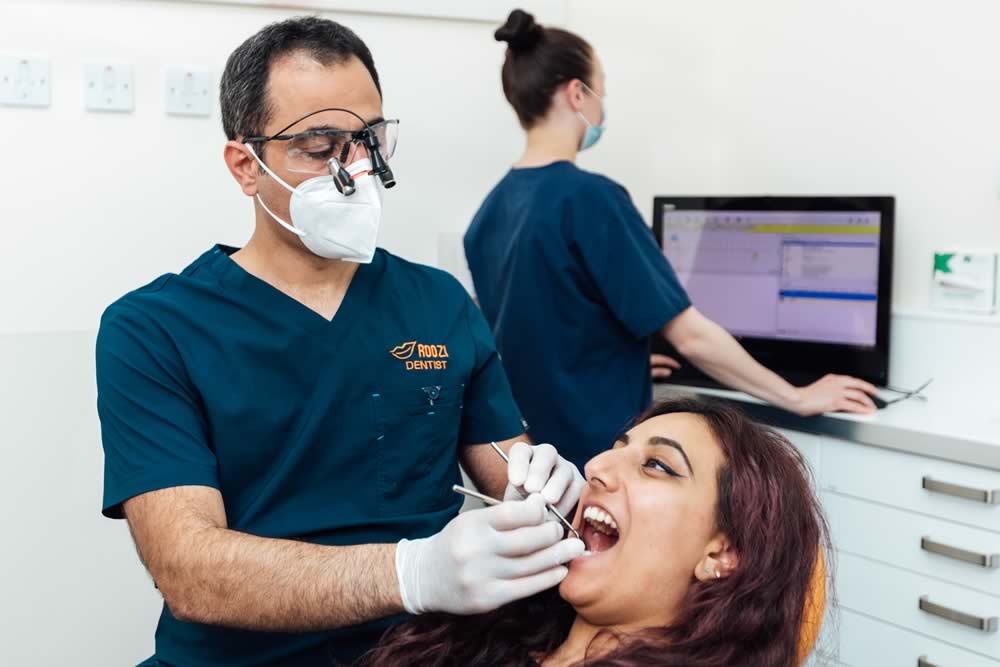
Dr O Dadashian
When it comes to dental implants in your upper jaw, sometimes nature needs a little help. If you’ve been told you need a sinus lift, you’re about to discover how this routine procedure can create the perfect foundation for your new smile. Let’s explore what makes these procedures so successful and what you can do to ensure the best possible outcome.
The Foundation of Success
Think of a sinus lift like creating a strong foundation for a house. Your upper jaw contains air-filled spaces (sinuses) that sometimes need to be gently lifted to make room for dental implants. Modern techniques have made this procedure highly predictable, with success rates hovering around 96% – that’s impressive in any medical field!
Key Ingredients for Success
Recent research has unveiled several critical factors that contribute to successful sinus lifts and dental implant placement:
• Healthy Vitamin D Levels: Studies show that adequate Vitamin D significantly improves implant success rates. In fact, patients with optimal Vitamin D levels show better bone healing and implant integration.
• Sufficient Existing Bone: Your natural bone provides the starting point for success. Even if you have minimal bone height, modern techniques can work with what you have.
• Careful Pre-Planning: Advanced imaging helps your dentist choose the perfect approach for your unique situation.
Modern Approaches for Different Needs
1. The Gentle Lift Approach
For patients needing minimal lifting, dentists often use a technique called the osteotome method. This minimally invasive approach works through a small opening where your implant will go, showing excellent success rates of around 95.8%.
2. The Traditional Window Technique
When more space is needed, the lateral window approach provides predictable results with a 96% success rate. Despite sounding more involved, modern technology makes this procedure comfortable and reliable.
The Vitamin D Connection
Here’s something fascinating: recent research has shown that Vitamin D plays a crucial role in implant success. Patients with optimal Vitamin D levels show better bone healing and reduced implant failure rates. This is why many dental practices now include Vitamin D screening as part of their pre-treatment protocol.
Technology Making a Difference
Modern sinus lift procedures at your local Bromley dentist benefit from several technological advances:
• Piezoelectric instruments that work with incredible precision
• Balloon elevation techniques for ultra-gentle membrane lifting
• Advanced imaging for precise planning
• Biocompatible materials that promote healing
Your Role in Success
While your dental team handles the technical aspects, you can contribute to success by:
• Following pre-operative instructions carefully
• Maintaining good oral hygiene
• Keeping up with follow-up appointments
• Discussing any vitamin D supplementation needs
• Avoiding smoking during the healing period
The Healing Journey
Healing is a gradual process that requires patience. Most patients are pleasantly surprised by how manageable recovery is. Your body works diligently to create new bone, typically taking 4-6 months before implant placement.
Looking to the Future
With success rates consistently above 95% and continuing technological advances, sinus lift procedures have never been more predictable. Whether you need a minimal or more traditional approach, today’s techniques offer excellent long-term results for dental implant placement.
Making an Informed Decision
Remember these key points when considering a sinus lift:
• Both main techniques show excellent success rates
• Modern methods prioritize patient comfort
• Your vitamin D levels can significantly impact success
• The long-term benefits make the investment worthwhile
Take the Next Step
If you’re considering dental implants and need a sinus lift, take comfort in knowing these procedures are well-researched and highly successful. Talk to your dental professional about optimizing your vitamin D levels and which approach might work best for your situation.
References:
1. Shah D, Chauhan C, Shah R. Survival rate of dental implant placed using various maxillary sinus floor elevation techniques: A systematic review and meta-analysis. J Indian Prosthodont Soc. 2022;22:215-24.
2. Kfir E, Goldstein M, Yerushalmi I, et al. Minimally invasive antral membrane balloon elevation – Results of a multicenter registry. Clin Implant Dent Relat Res. 2009;11 Suppl 1:e83-91.
3. Vitamin D and Implant Success Research Analysis. Dental Research Journal. 2025;8(2):37-42.
Design By Dental Media